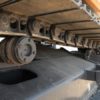Britain’s biggest housebuilders slow home construction
Britain’s biggest housebuilders are slowing the construction of homes, just months after the chancellor pledged to “fix the foundations” of the housing crisis with measures aimed at accelerating building.
The number of new homes registered in the three months to the end of September was 2 per cent lower than a year ago, according to the National House Building Council.
In depth

Price indices have presented wildly contrasting pictures of the health of the housing market — according to some the boom is back, while to others the slump staggers on
But there were sharp regional variations as housebuilders focused heavily on London where the continued surge in house prices meant they were able to maintain margins despite significant rises in labour costs.
Registrations of new homes rose 25 per cent in London in the third quarter. House prices there have gone up 10.6 per cent over the past year, according to Nationwide. But the number of new homes registered in Yorkshire over the same period fell 37 per cent, while those in the West Midlands were 24 per cent lower.
The general slowdown comes despite government measures such as a relaxation in planning rules and incentives for homebuyers.
More than a quarter of housebuilders’ sales are through the government’s Help to Buy scheme, which has been extended to 2020. Under the scheme, the government lends buyers up to 20 per cent of the value of a new-build home priced below £600,000, interest-free for five years and only repayable once the property is sold.
Housebuilders have been enjoying a renaissance over the past two years with the number of homes built up a third. Berkeley, Barratt, Persimmon and Taylor Wimpey all increased their pre-tax profit by 40 per cent or more in the past financial year alone.
But costs for on-site labour have started to rise sharply. This is beginning to hit margins, discouraging housebuilders from increasing the supply of homes in areas where house prices are not rising quickly enough to offset labour costs for bricklayers, carpenters, joiners, plasterers and site managers.
Sources say Barratt, Taylor Wimpey and Persimmon have been quietly telling shareholders that they have a maximum number of units they want to build.
Barratt, Britain’s biggest housebuilder, launched 49 developments — down from 80 at this stage last year — and operates from 380 sites, compared with 395 last year. It said there were still shortages of skilled labour in some trades and locations.
On Thursday Bovis, another large housebuilder, also warned that profit margins would suffer under planning delays and rising costs caused by labour shortages.
Noble Francis, economics director at the Construction Products Association, said: “Housebuilders have clearly found it is increasingly difficult and costly to get on-site labour and this has hit margins.

“This acts as a strong disincentive to start new sites in areas where demand is also softening, highlighted by the slowing house prices in the Midlands and Yorkshire. As a result, housebuilders are focusing even more on building in areas such as London where the margins are less affected as house prices are rising quickly enough to offset the rising labour costs.”
Alastair Stewart, analyst at Westhouse Securities, said: “Although the market outside of London looks pretty benign, volumes for some of the biggest housebuilders are approaching what they have described as their ‘optimal’ capacity levels; they have got rid of most their old low-margin land, so there is less of a positive kicker going forward; and prices and build costs are rising roughly in line.”
Britain’s housebuilders were severely hit by the financial crisis in 2007, and many ended up in the hands of banks — predominantly Lloyds Banking Group and Royal Bank of Scotland.
Since 2010, they have restored profits and margins by building on cheap land bought during the recession.
But the industry faces a skills shortage after an estimated 300,000 people left the building trade in the 2008-10 downturn. The number of construction qualifications awarded through apprenticeships, colleges and universities has also fallen 10,000 in the past two years, according to research by the Local Government Association.
Labour costs are rising as a result. Bricklayers are earning 20 per cent more than two years ago and are still in short supply, as are carpenters.













